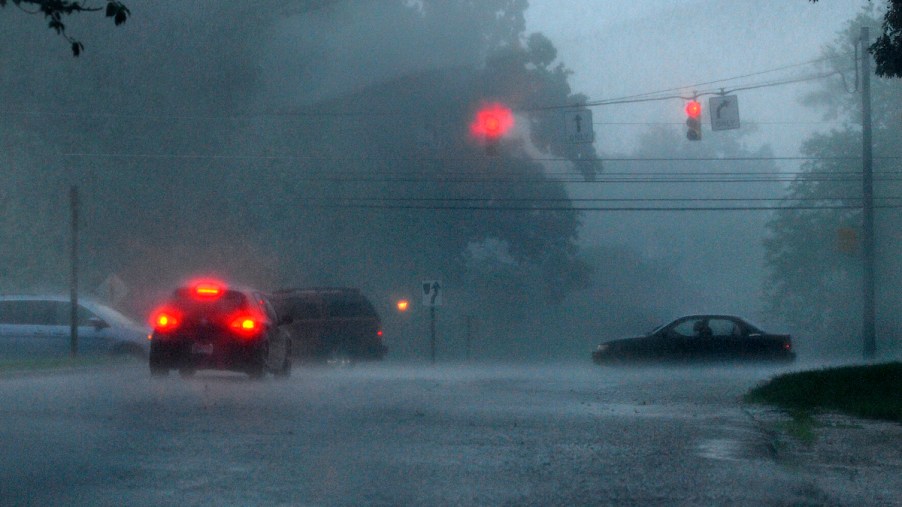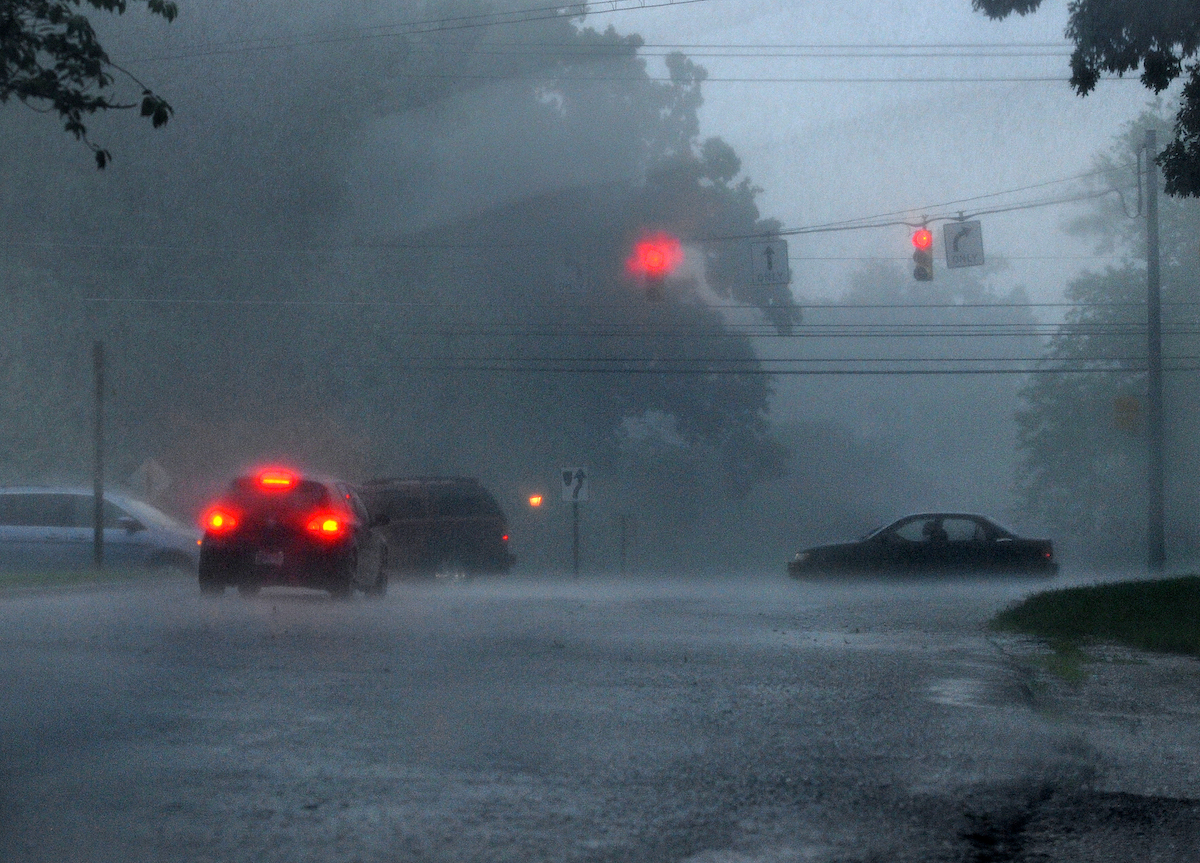
Why Does a Car Hydroplane?
Inclement weather due to a changing climate is becoming increasingly common. Heavy rain poses a particular threat to motorists called hydroplaning. When a car’s tires lift atop a layer of water, the driver can lose control even with proper maintenance. You risk damaging your vehicle and physical harm to yourself and others. So, why does a car hydroplane? And what should you do if your car hydroplanes?
What happens when a car hydroplanes?

According to Go Auto, hydroplaning happens when the tires on a vehicle encounter more water than they can expel.
When you’re driving in rain, the water pressure at the front of the wheels sends water beneath the tires, where it gets between the road and the wheel. With the tires on a layer of water on the road, you lose braking, traction, and steering. With no grip on the road, you can easily lose control of the vehicle.
When you no longer have control of your vehicle, you run the risk of car accidents, causing injury to yourself and others. There’s also the chance you could damage your vehicle or someone else’s property.
Why causes a car to skid in the rain?
There are three contributing factors to what causes cars to hydroplane, according to Markel Insurance.
The first is the vehicle’s speed. The car’s traction is reduced as it moves faster. The condition of the tires also plays a role because a tire with worn tread is less able to resist hydroplaning. Finally, the depth of the water is important because the deeper it is, the faster you’ll lose traction and then control of the vehicle.
When your tires are moving too quickly over a wet surface, there’s not enough time to push the water away from the center of the tire. The tires end up sliding atop the water and putting you, your passengers, and your vehicle at risk. When your vehicle becomes waterborne, it’s called the transition point.
The transition point is reached due to several factors. Wider tires have more contact with road surfaces, so it takes higher speeds for them to reach the transition point.
While we’re talking about the tires: The tread pattern and tire pressure play a part. Tires that aren’t inflated properly are more prone to hydroplaning.
The water also plays a significant part. The depth of the water, whatever might be in the water, and other factors can contribute to dangerous hydroplaning. What’s the water’s temperature? Is there dirt, oil, or salt in it?
What else can factor into hydroplaning? Speed plays a role. While hydroplaning can happen at any speed in certain situations, any speed over 40 mph is a real risk. Vehicles with lower curb weights and all-wheel drive can also be more prone to this potential danger.
The condition of the road is also a factor. A smooth, non-grooved asphalt surface increases the chances of hydroplaning.
What should you do if your car hydroplanes?
If you’ve never been in a car that has hydroplaned, it could be hard to know when you’re in that situation. The rear of the vehicle might feel loose. The steering might feel too easy.
Keep an eye out for standing water or sprays of water on the road before you. It’s important to slow down. If your car starts hydroplaning, don’t stomp on the brake pedal or jerk the steering wheel because any sudden movements could make the situation worse. Instead, hold the wheel firmly and take your foot off the accelerator. Allow the vehicle to slow until its steering returns to normal.
If you have to use the brakes, do so carefully with light pumping motions. If your car has an antilock braking system, brake normally.
To prevent hydroplaning be proactive. Check your tires for tread wear and pressure. If you’re unsure, ask a service center for help.


